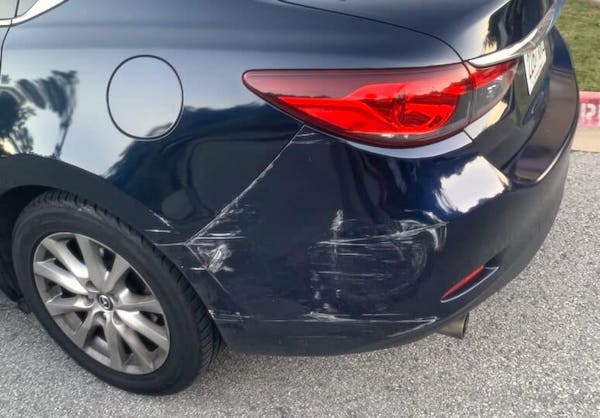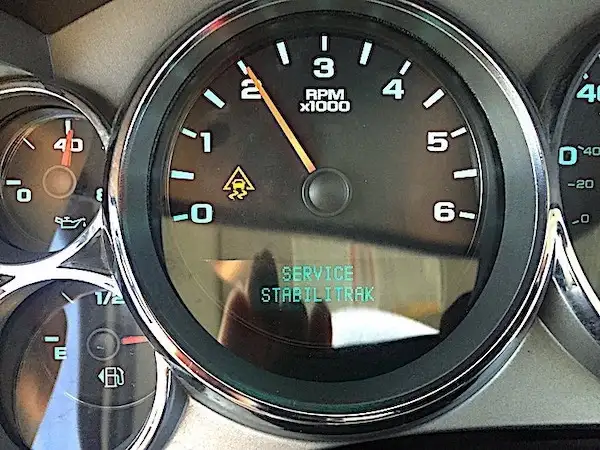The Engine Management Unit (ECU) is the central pc or “brain” of any vehicle and manages several individual elements, like the fuel gadget via varied sensors. The ECU makes certain the gadget sprays fuel at the correct time and within the correct quantity therefore the correct air/fuel mixture is formed.
A vehicle’s fuel pump pushes fuel from the tank, through fuel lines, and into the fuel injectors. Once the ECU determines fuel is required, it communicates this to the fuel gadget magnet that then opens to permit the controlled fuel to spray into the cylinder.
There are a number of things to consider while checking the signs of a bad fuel injector. Given that these are a part of the gas system, it’s important to watch for these signs to check if the fuel injector is broken down or failing.
Top 9 Signs Of A Bad Fuel Injector

The following signs will help you identify a bad fuel injector:
1. Your vehicle’s check engine light can illuminate
Your auto’s internal laptop uses the check engine light to capture your attention to an internal issue. While the problem might seem subtle, some check engine light illumination causes can be very serious, resulting in complete engine failure.
Therefore, if your vehicle’s check engine light illuminates, you don’t want to ignore the matter, and you’ve got to require your vehicle to an expert mechanic as shortly as attainable. Some very complex issues do not give you a chance to drive your vehicle to the mechanic. In such a scenario, the vehicle must be towed to the nearest repair shop.
Although there’s an inventory of causes for check engine light-weight illuminating, a nasty fuel appliance is one of all the common causes. This is because the engine isn’t receiving the proper quantity of fuel at the proper time. The best way to ascertain the cause of the matter is by using an OBD2 scanner. The OBD2 scanner can scan the error from the vehicle’s laptop, translate it, and recommend different repair choices with the expected repair prices.
2. You might smell a fuel-like odor
If you smell anything strange, whether fuel or anything else, you must take immediate action and get your vehicle inspected by a professional mechanic. While these smells might be due to simple issues, they also can be associated with important issues.
Smelling a fuel-like odor isn’t continuously associated with a nasty fuel injector; it may be because of breaks within the fuel lines. For example; It can also be a tangle with a broken fuel appliance. Whatever the reason was, you want to get the matter repaired as shortly as possible to stop engine harm.
3. Your engine would possibly surge suddenly
Most fuel appliance issues are associated with a clogged or dirty fuel appliance. However, generally, a nasty fuel appliance will spray an excessive amount of fuel to the combustion system, and this is often as unhealthy as spraying a touch fuel. The combustion system needs a particular air-fuel ratio. Otherwise, having loads of fuel will cause the engine to surge as it is not ready to burn the surplus quantity of fuel. With a lot of fuel, the engine’s rev can increase considerably although the load remains constant.
4. Bad fuel economy
If the engine isn’t obtaining the proper quantity of fuel it wants for combustion, then it’ll place a lot of demand on the appliance to provide it with extra fuel. This leads to poor fuel economy because of the surplus fuel that the car ECU thinks is required however is indeed not necessary.
5. Failed emissions test
Nearly every personal vehicle must go through smog and emissions testing to be legally registered. If you have ever failed an emissions test you know that it is a stressful situation, as it generally requires a trip to the mechanic. Luckily, some of the prevalent issues related to emissions test failure are quite cheap to repair.
It’s important to note some of these signs of bad fuel injectors as they will save you a great deal in the long run. A broken or leaking fuel injector can cause an uneven or incomplete fuel burn, thus increased emissions are a result. Sometimes a fuel injector leak can cause the mixture of air and fuel to be so rich that it eventually burns out the catalytic converter.
6. Fuel leak
If your fuel appliance is truly broken or cracked from harm or possibly because it’s worn out, then gasoline can begin to leak. This suggests the fuel won’t be ready to reach the nozzle; rather, it’ll leak from the body. If you check the fuel appliance, you’ll notice fuel on the outside of the closed fuel rail. Often, the leak is returning from the fuel appliance seal that deteriorates over time.
7. Engine misfires
If the engine doesn’t get enough fuel sprayed into because of a clogged appliance, then the engine can misfire as you drive. Your vehicle can struggle to accelerate or there’ll be a disruption once you step the accelerator pedal. Either way, you’ll wish to require care of the matter shortly or the engine is going to be prone to heating or alternative issues that occur once the correct air/fuel mixture is upset.
8. Engine vibrations
If the fuel intake system is not well adjusted and calibrated, it can result in engine vibrations. It can even happen when the engine is idling or due to the engine experiencing insufficient fuel-air mixture due to the improper adjustments. Adjusting the idle speed on the carburetor and cleaning the fuel intake system can correct this issue.
A faulty fuel appliance can cause the corresponding cylinder to not be able to fire. This suggests that whilst driving, the engine can vibrate or hiccup once it tries to complete every cycle while not fueled.
9. Rough idle or engine stalls
An engine that is idling without rough pulses should be able to maintain a steady but low rate of revolutions, somewhere in the vicinity of 1,000 RPM. The tachometer pin should be stable and not shaking. A properly idling engine gives enough power to operate your vehicle’s basic systems like the power steering, electrical system, and cooling system. Smooth idling shows that your engine’s fuel and air are mixing properly. Since the vehicle is not getting sufficient fuel or an inconsistent supply of fuel, the RPM while idling drops below the optimal level and ends up in a rough or even violent idle. If the levels of RPM go too low, the car will stop and you will need to start the vehicle again.
How To Troubleshoot A Bad Fuel Injector?
One of the ways to troubleshoot a bad fuel injector is by visually Inspecting the fuel spray on TBI injectors. Fuel flow spray can be reached with ease, making it fast to do fuel injector testing for potential issues. Below is a step-by-step guide on how to troubleshoot a bad fuel injector.
(a) Voltage Test
A voltmeter or test light tool can be used to check the signs of a bad fuel injector. Follow the steps below:
- Ensure that your injector is cold, because a hot injector could produce a false reading.
- Turn on the ignition key but you should not start the car.
- Bridge the voltmeter or test light to the negative side of the battery.
- Unplug it and read the meter for the manufacturer’s ohm specs. 0///0//0.
- If it doesn’t meet the specifications, there’s a problem.
(b) Leak Test
This test can be checked in ways as follows:
Pressure reading
- In place of the spark plug, a pressure gauge is linked.
- Crank the engine to create a pressure reading.
- Check the engine’s ability to create pressure through a compression test
- The positive pressure created by the cylinder is read with the gauge
Loss reading
An engine leak down test is a compression test in reverse. Compressed air is directed into the cylinder through the spark plug hole. One of the tester gauges reads the pressure of the air entering the cylinder and the other reads the percentage of the air exiting (or leaking) from the cylinder. The loss percentage will signify the state of the cylinder and the overall state of the engine.
(c) Check for resistance employing a Multimeter
Collate the resistance between all the injectors using a multimeter. Connect one lead to one side of the injector and the other lead to the other side. Check for the fuel injector whose specifications are skewed. Sometimes, you can still get the correct readings on an injector that’s clung on the inside. Be sure to use any of the other three methods to confirm.
Conclusion
Buildup in your vehicle Engine isn’t editable, thus you should always be sensitive to check these signs of a bad injector pump. With this information, you’ll be ready to keep it clean for extended periods. Fuel additives like Berryman B12 Chemtool work to stop and dissolve build-up among your equipment. And you need to put a little extra care into your equipment using an Air & Equipment Maintenance Kit to clean all major duct and equipment parts in fuel-injected, gas-powered vehicles.



